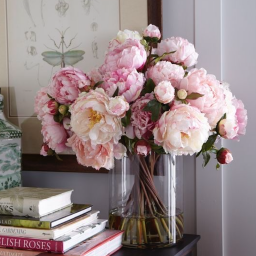1. Coffee Filters

Once you've brewed your coffee, don't throw away the paper filter. Instead, next time you repot a houseplant or an outdoor container, use the coffee filters to line the bottom of the pot. This will prevent dirt from slipping out of the drainage holes and help maintain an even moisture level in the potting soil, as the coffee filter will retain some water and then release it as the soil dries between waterings.
2. Cardboard Tubes

Cardboard tubes in the center of toilet paper or paper towel rolls are great for protecting seedlings. Simply cut the toilet paper tubes in half, or cut a paper towel tube into five equal pieces. Place one of these cardboard tubes around the base of seedlings or small, new plants and gently press the cardboard slightly into the soil to hold it in place. The collar will prevent snails, slugs cutworms,or other pests from reaching your seedlings so they can grow in peace. The cardboard dissolves within a few weeks, so you don't have to worry about removing it.
3. Egg Holders

When you're done with your eggs, you can turn the cardboard egg holder into 12 small growing containers. Fill each piece with a little seeding soil, place a seed inside, and then fill up with more soil. Place the pots in a warm, bright spot and spray them with water daily until the seedlings appear. Once the seedlings are a few inches tall, cut the egg holder into 12 separate sections and plant each one directly into your garden. The cardboard will dissolve over time, and your seedlings can grow big and strong without fear of disturbing their roots.
4. Eggshells

Eggs are a delicious and healthy breakfast for you, and their shells also provide a good "meal" for your plants, mainly in the form of calcium. Eggshells are full of this important mineral that helps plants build strong cell walls. Rinse the eggshells thoroughly, let them dry, and then crush them with a pestle or similar grinder. Then work a handful of the ground shells into the soil around your plants, whether in a flower bed or a container.
5. Coffee Grounds

You rely on your morning cup of coffee to get you going, and your plants can benefit from it too. Coffee grounds contain a lot of nitrogen, which helps foliage develop. But don't overdo it: too much coffee can stunt plant growth due to the caffeine content and acidity. To be safe, never pile more than half an inch of coffee grounds around your plants, and cover the coffee grounds with an inch or two of soil to prevent compaction, which could prevent water from seeping into the soil.
6. Banana Peels

Banana peels are good for more than tripping up would-be bad guys in cartoons. They're rich in potassium, an important nutrient that helps plants move water between cells, grow healthy roots, set fruit and flowers, and ward off disease. So the next time you finish a banana, don't throw the peel away, bury it next to one of your flowering plants outdoors. Be sure to cover it with several inches of soil to prevent insect infestation or odor. As the husk decomposes, it will release its potassium and other nutrients into the soil, benefiting nearby plants.
7. Nutshells

If slugs are up to their mischief in your garden and you want to avoid using poison baits, try using nut shells. Any type of nut will do - except black walnut shells, which contain a compound called juglone that can be harmful to many types of plants, including tomatoes, peppers, hydrangeas and rhododendrons.
Roasted nuts are fine, but stay away from salted shells, which can burn your plants in large quantities. Use a hammer or other heavy object to smash nut shells into small, jagged pieces, then scatter the shells in a circle around vulnerable plants. Delicate slugs and slugs don't like to glide over sharp surfaces, so they will turn away in search of easier food sources.
8. Cooking Water

Why waste the water you used to boil or steam vegetables, pasta, or beans when many parts of the country are experiencing restrictions due to drought? Instead of pouring it down the drain after cooking, use the (unsalted) water to fill your watering can. Not only will you quench the thirst of your houseplants or garden plants, but you'll also provide them with a little fertilizer, thanks to the starches, vitamins and minerals that go into the water from the boil.
9. Citrus Peels

If the neighborhood cats use your yard as their own private litter box, you can prevent unwanted visits with citrus peels. Most cats abhor the smell of citrus and will shy away from the smell of orange, lime, lemon or grapefruit peels. Use this to your advantage by cutting the peels into 1-inch pieces - the more you cut into the peel, the stronger the scent, as the cutting releases the citrus oils. Then spread the pieces around the planter that the cats prefer. You'll need to replace the bowls every few days, but the cats should get the message quickly and leave your garden in search of a more hospitable place.
10. Vegetable Peels

You don't have to have a special compost pile to create compost. In fact, you can simply dig a trench or hole about 12 inches deep in an area of the garden with light foot traffic and fill it with hated kitchen scraps like vegetable peels, overripe fruit, coffee grounds and crushed eggshells.
Fill the trench with 4 to 6 inches of waste, then cover it with soil. Within a few months, the waste will have turned into nutrient-rich compost that can be left in place or dug up and spread around the garden as needed.












I've just discovered your site and as a gardening newbie I'm so pleased that I did.
Thank you